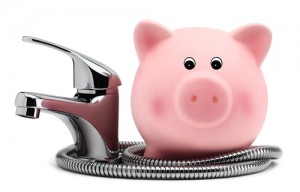
If you live in an older home (and even if you don’t) it’s possible that you’re rinsing, washing or flushing valuable money and natural resources right down the drain.
Here’s a simple, straightforward guide to installing energy-saving, eco-friendly plumbing systems in your home.
If you live in an older home (and even if you don’t) it’s possible that you’re rinsing, washing or flushing valuable money and natural resources right down the drain.
Here’s a simple, straightforward guide to installing energy-saving, eco-friendly plumbing systems in your home.
Low-flow & you wouldn’t even know it
Twenty years ago installing a low-flow shower head meant you’d better get used to heading to the office with a little shampoo in your hair. In short, they were awful.
But today’s water-efficient models perform just as well as their higher GPM counterparts. By utilizing air-induction and other innovative technologies it’s possible to create extraordinary bathroom experiences using a fraction of the water.
Popular showerhead manufacturers like Kohler offer a wide range of styles bearing the WaterSense label.
Maximize your gallons per flush
As water becomes scarcer, the Environmental Protection Agency continues to tighten the restrictions on required GPF targets for WaterSense qualified toilets. Whereas 1.6gpf toilets were once considered cumbersome and ineffective, today’s high-performance “green” toilets must meet or exceed just 1.28gpf, a full 20 percent lower than what was once the industry standard.
Siphon-action jetted bowls, vacuum-assisted flushing and similar advancements now make it possible for liquid-wasted flushes as low at 0.8 gallons.
In many homes the installation of an environmentally friendly toilet can save over 20,000 gallons of water per year, simultaneously lowering waste impact and your water bill.
And speaking of toilets, a dual-flush toilet makes it possible to choose between two separate GPF rates depending on whether you’re flushing liquid or solid waste.
The power of an aerator
Most older faucets can be easily retrofitted with a screw-on aerator to lower water usage while still maintaining a powerful flow, but if you’re ready to rip out those older fixtures and upgrade, look no further than DELTA for stylish water-saving faucets for the kitchen and bath.
DELTA was named WaterSense Partner of the Year in 2014 for their commitment to excellence in green technology, and the number of their product lines that qualify for WaterSense designation is truly astounding.
A WaterSense faucet in your bathroom alone can cut water consumption by 30% which translates to around 500 gallons each year.
Avoid heat loss
It’s not just the water itself we often waste in our homes. One of the best ways to lower monthly energy bills is by changing the way we heat the H2O running through the pipes.
Pipe Material
In new installations PEX (cross-linked polyethylene) piping maintains heat better than traditional copper or plastic piping. If replacing your piping is not feasible, consider insulating the system you’ve already got. Properly insulating your pipes can reduce heat loss by up to 80%.
Energy Efficient Water Heater
Modern eco-friendly heaters are less apt to leak and hold heat much longer than models produced just a few years ago. For full energy efficiency, however, consider the move to tankless (otherwise known as on demand) heating.
